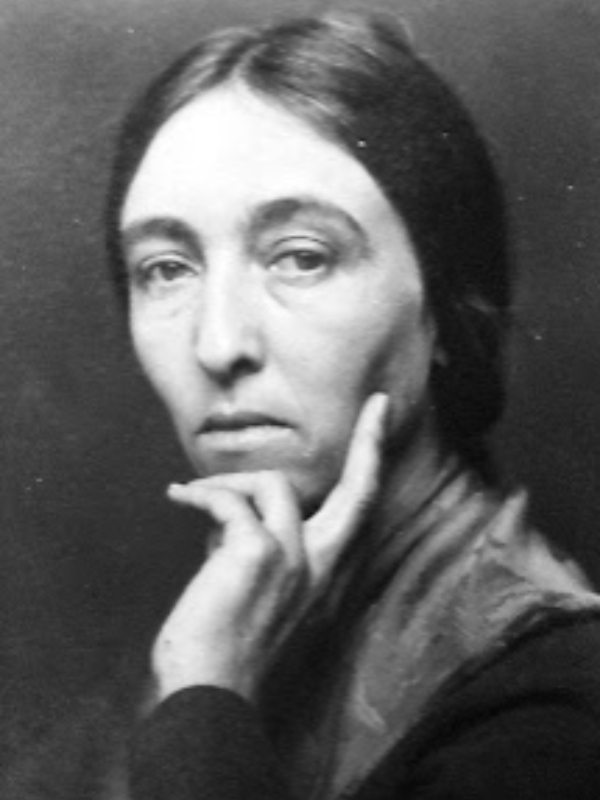Imagining Carmel:
The Art of Jeanne D’Orge
and
Poetry of Dora Hagemeyer


When Carmel was a small community of artists and bohemians, many studios and living rooms doubled as galleries or performance spaces. With few formal venues available, non-conformist artist and poet, Jeanne D’Orge, and her inventor husband, Carl Cherry, opened their home to share new ideas, creations, and perspectives. Their passion to enrich the community’s culture through support of experimental and intellectual arts has continued over the Cherry Center’s nearly 75-year history.
Our latest exhibit – “Imagining Carmel” – honors the spirit of two such bohemians, pairing the artwork of our founder, Jeanne D’Orge, with prose by noted poet and painter Dora Hagemeyer. Ceramics by Brad Schwieger complement the exhibit’s visual and literary storytelling.


TO CARMEL-BY-THE-SEA
O little village where life’s stress
Is gentled into peacefulness!
The dunes above the songful sea,
The granite cliff’s austerity,
The fields wherein we wade in flowers,
The sun-filled air, the sun-hushed hours,
The blue above, the blue below,
The play of tides that come and go,
The salt-white sand, the dips and coves,
The wild birds singing through the groves,
The sombre pines with ageless green,
Unchanging, rugged and serene,
And where the hills to seaward fall,
Eternal silence, arching all!
-Dora Hagemeyer (1891-1989)



Jeanne D’Orge
Photograph by Wynn Bullock
Born in 1887 in England, Jeanne d’Orge spent her childhood in Edinburgh, London, and Paris. Her book of verse, Voice in the Circle, published in 1955, focuses on her childhood in Europe.
After moving to New York in 1906, d’Orge became associated with “The Others,” a group of iconoclastic poets that included Marianne Moore, William Carlos Williams, and Wallace Stevens. Her poetry was included in the anthology The Others and The Poetry Journal. In 1923 Scribner’s Magazine published her award-winning “Lobos” poems.
Jeanne d’Orge died on May 1, 1964, at the age of 87. Although her painting was recognized in her lifetime for its forcefulness and spirit with exhibits at the Santa Barbara Museum of Art, the Park Avenue Galley in New York City, and the De Young Museum in San Francisco, d’Orge insisted that her paintings never be sold, saying only, “I’m just a paintbrush for God.”
Dora Hagemeyer was born October 12, 1891 in Gawler, South Australia. The oldest of 14 children, she grew up in New Zealand and graduated from Timaru Teachers College in 1914. Dora moved to Berkeley, California a year later, and Carmel in 1925.
Hagemeyer authored her first book of poetry around 1929. In all, she published almost 20 poetry booklets, the last in 1986. Her most acclaimed work was a 1947 volume of poetry entitled, “White Sands of Carmel.” Of the tome, reviewer Irene Alexander said,
“Skilled craftsmanship and the discrimination which stems from culture have contributed in no small measure to the delight the reader will experience in The White Sands of Carmel. Imaginations will be kindled and emotions stirred by her responses to Carmel, ‘Where highways step aside for trees,’ where its people ‘Hold a tree a creed — and will not yield it to achieve — The questionable boon of speed.’ ”
In addition to poetry, Hagemeyer also produced many fine-line ink drawings of flowers and weeds which led to her most productive artistic effort – watercolors. Dora took up the medium at the age of 85, “because it is more challenging,” claiming creativity “sharpens awareness of life.” She told the Pine Cone an exhibit at the Carl Cherry Foundation in 1977 got her to take watercolors more seriously. Later works were inspired by nature, world travels, and places “mostly in my mind.” Dora Hagemeyer was an active member of local art and literary communities until her death in 1989, age 97.

Dora Hagemeyer
Photograph by Edward Weston

Brad Schwieger
Brad Schwieger has participated in more than 300 exhibitions including: The Seto Ceramics and Art Glass Center, Seto Japan, 2002; The 2nd Cheongju International Craft Competition, Korea, 2001; American Shino, Babcock Galleries, New York, New York, 2000 Different Stokes: International Wood Fired Ceramics Invitational, at The University of Iowa Museum of Art in Iowa City, among others. He was an Artist in Residence at The Archie Bray Foundation for Ceramic Arts in Helena, Montana and the Watershed Center for Ceramics in Maine, both in 1998. He has conducted more than 50 workshops and lectured across the United States, Europe and Asia. His work has been published and reviewed in American Craft, Ceramics Monthly, and many other periodicals and books.
